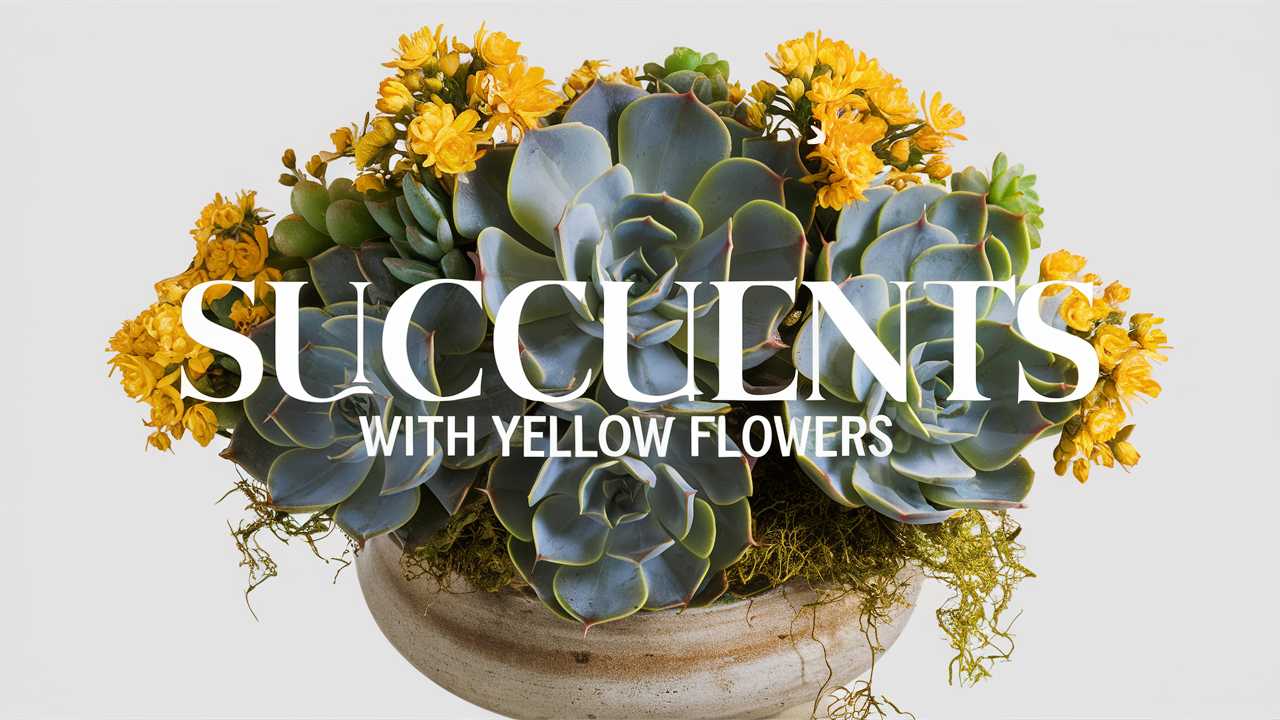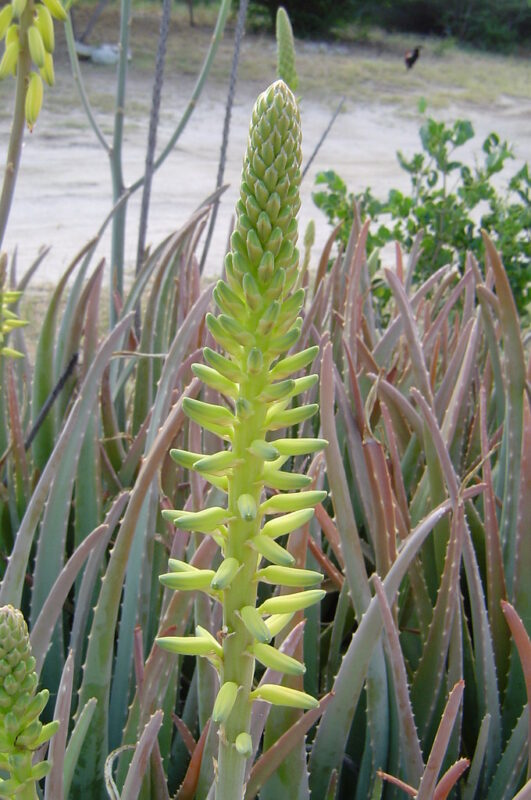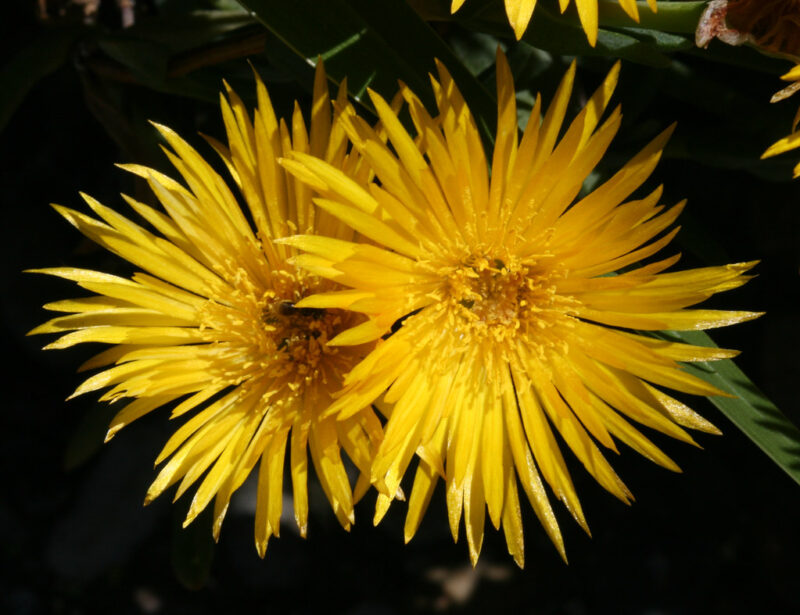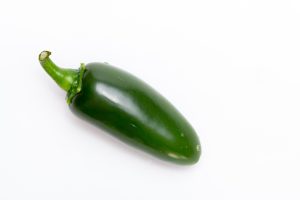In this post, we will explore an array of succulents known for their vibrant yellow blooms, delving into their care needs, unique characteristics, and why they are wonderful additions to any plant collection. Whether you’re enhancing your indoor garden or brightening up your outdoor space, these succulents will surely captivate your heart.
Kalanchoe Blossfeldiana
Kalanchoe Blossfeldiana, popularly known as Kalanchoe or Flaming Katy, is a delightful succulent famous for its colorful flowers and hardy foliage. The yellow variety, while not as common as its red and pink counterparts, is particularly vibrant and capable of brightening up any corner of your home or garden. During blooming season, clusters of small star-shaped yellow flowers spike from the main foliage, creating a captivating display.
This succulent flourishes in bright, indirect sunlight, making it suitable for both indoor and outdoor placements. Kalanchoe requires minimal watering—allowing the soil to dry out completely between watering sessions is essential to prevent root rot. It thrives best in well-draining soil, often a standard cactus mix mixed with perlite. Kalanchoe is relatively easy to propagate through leaf cuttings, making it a fun project for those looking to cultivate more plants. Besides its visual appeal, Kalanchoe is known to purify the air, providing an additional bonus to having it in your space.
Bunny Ears Cactus
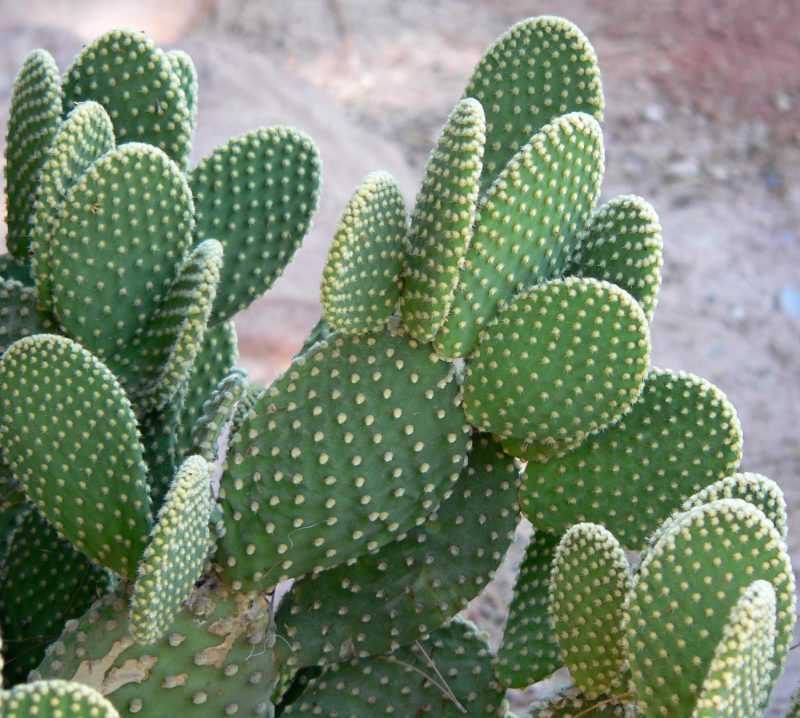
The Bunny Ears Cactus, or Opuntia microdasys, is a whimsical succulent native to Mexico. Its distinctive pads resemble cute rabbit ears, making it a playful addition to any cactus collection. What sets the Bunny Ears Cactus apart is its bright yellow flowers that bloom during the warmer months, adding a cheerful and eye-catching element to its cute form.
This cactus is exceptionally easy to care for, thriving in full sun and preferring well-draining potting soil. It allows for infrequent watering—allowing the soil to dry out between waterings to avoid over-saturation. However, potential owners should be cautious of its glochids, tiny hair-like spines that can easily attach to skin. If you’re looking to enjoy a unique and lively accent in your home or garden, the Bunny Ears Cactus is both charming and low-maintenance.
Echeveria Pulidonis
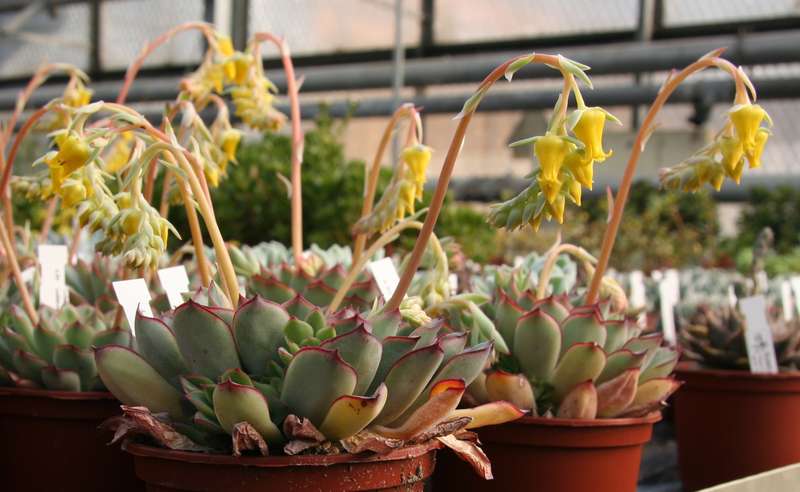
Echeveria Pulidonis is a stunning succulent known for its rosette formation and waxy, blue-green leaves. In spring, this variety surprises its caretakers with clusters of bright yellow-orange flowers that bloom on long stems above the foliage. The bell-like shape of the flowers can add elegance and vibrancy, attracting attention in any succulent display.
This Echeveria thrives best in bright light, preferably receiving plenty of indirect sunlight. It needs well-draining soil, typically a cactus or succulent potting mix. Care should include moderate watering; it’s best to water when the top inch of soil is dry, as too much moisture can lead to root rot. Echeveria Pulidonis is easily propagated through offsets or leaf cuttings, enabling plant enthusiasts to share this beautiful succulent with other gardeners.
Echeveria Elegans
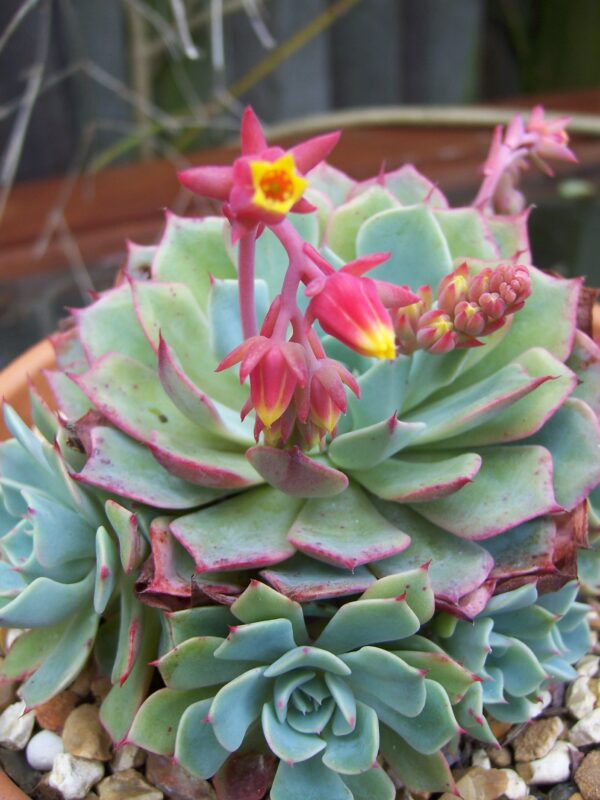
Echeveria Elegans, also known as the Mexican Snowball, is a classic succulent that hobbyists adore for its lovely rosette form and soft, powdery blue-green leaves. This succulent truly shines during its blooming season, showcasing tall stalks adorned with clusters of small, tubular yellow flowers that rise above the rosettes. This bright floral display can create a picturesque focal point in any arrangement.
Caring for Echeveria Elegans is straightforward. Provide it with bright, indirect sunlight and ensure it’s planted in well-draining soil. Watering should occur once the topsoil is dry to the touch, helping to prevent water accumulation. Its ease of propagation via offsets makes it a favorite for those keen to cultivate more succulents or share with friends.
Angelina Stonecrop
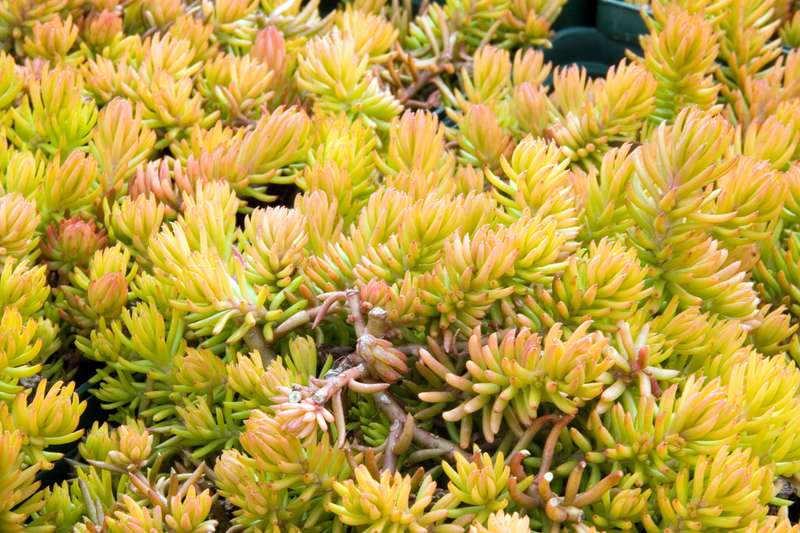
Angelina Stonecrop, or Sedum rupestre ‘Angelina,’ is a lively ground cover succulent offering exuberant yellow foliage that turns a golden hue with the right light conditions. Adding to its charm, this resilient plant produces delicate star-shaped yellow flowers in spring and summer, creating vibrant carpets of color in gardens and containers alike.
This succulent loves full sun and is highly drought-tolerant, making it ideal for those looking for low-maintenance options. Plant Angelina Stonecrop in well-draining soil, and water sparingly after it is established; this will ensure it thrives. Its ability to propagate easily through cuttings adds to its appeal, providing countless opportunities to expand your succulent collection.
Yellow Flowering Aloe Vera
Aloe Vera is one of the most renowned succulents, well-known for its soothing gel and healing properties. However, its striking yellow flowers, appearing on long stalks during blooming season, often go unnoticed. These tubular flowers make a charming addition to the overall appeal of this versatile plant.
This succulent is easy to cultivate, flourishing in bright indirect light and requiring limited watering. Ensure the potting soil drains well to prevent the roots from sitting in excess moisture. When it comes to propagation, Aloe Vera can produce offsets, making it simple to create new plants from an established one. Its combination of beauty, health benefits, and ease of care make Aloe Vera a staple in homes and gardens everywhere.
Yellow Flowering Aeonium Arboreum
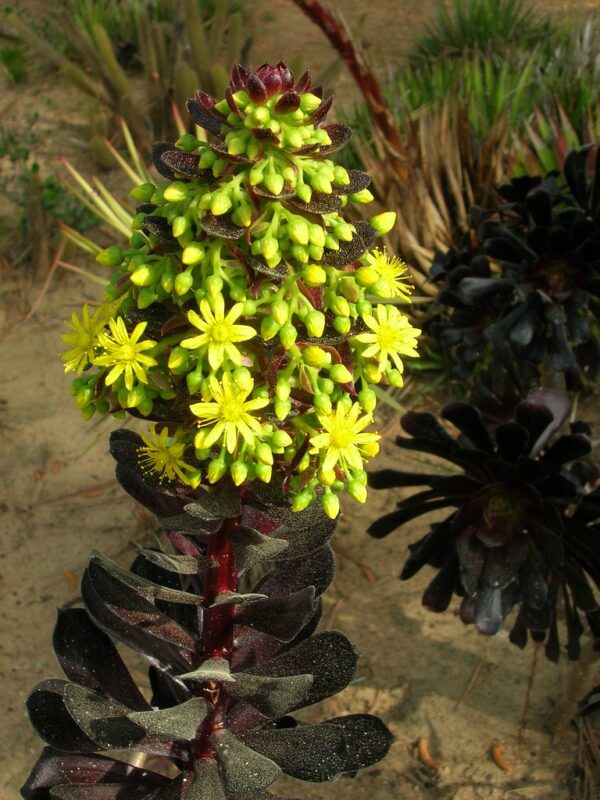
Aeonium Arboreum, often referred to as the Tree Aeonium or Irish Rose, is a striking succulent known for its rosettes of thick leaves, which can range from deep green to pale hues. When in bloom, Aeonium Arboreum produces stunning yellow flowers on tall stalks, making a dramatic statement against its lush foliage.
For optimal growth, place Aeonium in full sun to partial shade and ensure it has well-draining soil. Watering should be moderate; allowing the soil to dry between sessions helps to maintain its health. This succulent bears a unique aesthetic that can add character to diverse gardening styles. Its ability to thrive with minimal care while still making a bold statement makes it a favorite for many gardeners.
Golden Barrel Cactus
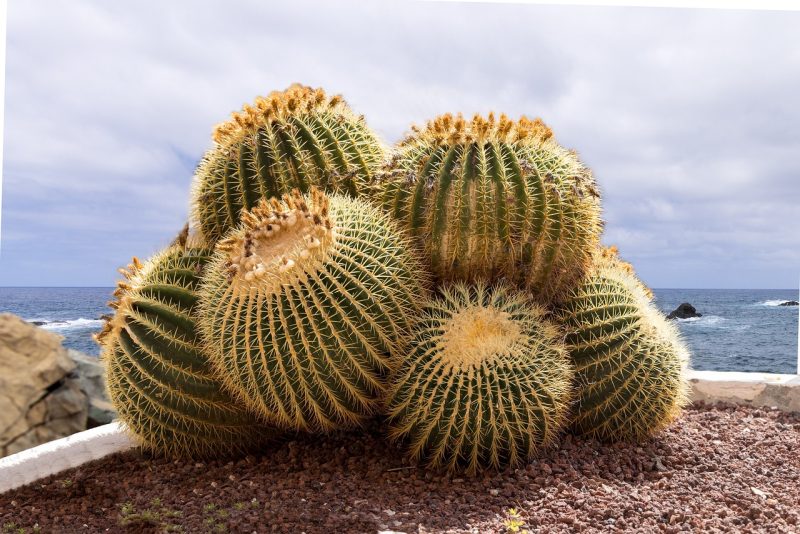
Golden Barrel Cactus, known scientifically as Echinocactus grusonii, is beloved for its striking spherical shape and striking yellow spines. When it blooms, this cactus produces vibrant yellow flowers, which emerge near its top and provide an elaborate display that is both stunning and unique.
To care for a Golden Barrel Cactus, provide it with full sun and ensure its pot has excellent drainage. This cactus is highly drought-tolerant and requires minimal watering, making it an ideal choice for plant owners seeking a bold addition without the fuss. As it matures, the Golden Barrel Cactus becomes a captivating conversational piece, sure to impress visitors.
Parodia Magnifica
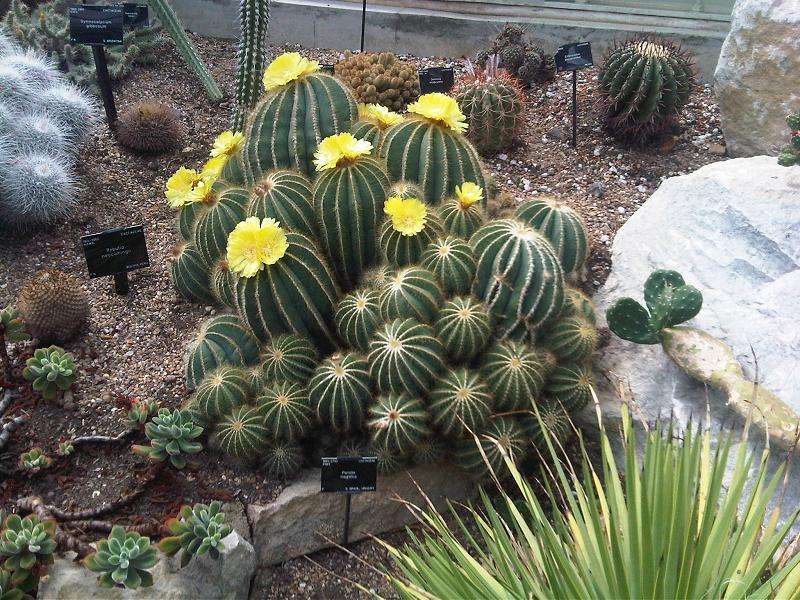
Parodia Magnifica, or Balloon Cactus, is a spiny, globe-shaped succulent with its own unique charm. When in bloom, this cactus displays beautiful yellow flowers that emerge from the apex, creating a visually stunning contrast to its spiny exterior. The flowers are short-lived but incredibly vibrant, often attracting pollinators.
Caring for Balloon Cactus is simple: it thrives in bright light and well-draining potting mixes. Water should be applied sparingly; allowing the soil to dry completely between watering is crucial to maintaining health. With its unique appearance and delightful blooms, Parodia Magnifica is a worthy addition to your succulent family.
Prickly Pear Cactus
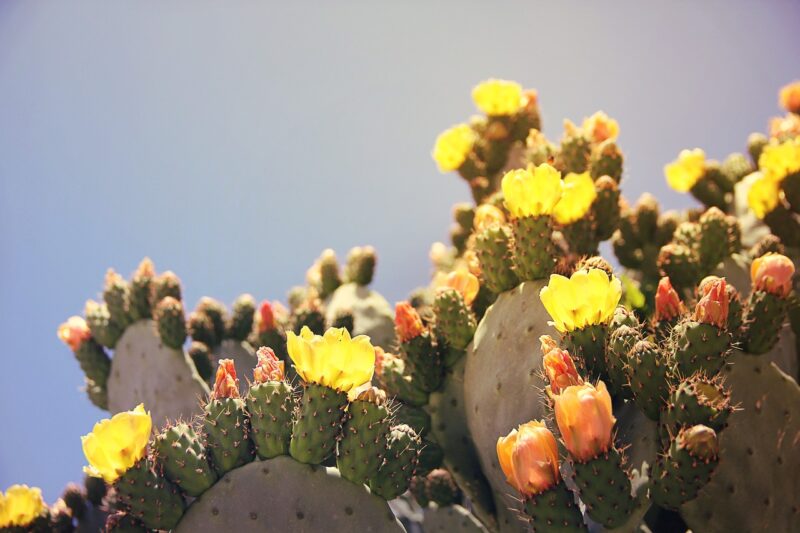
Prickly Pear Cactus, scientifically known as Opuntia, is recognized for its distinctive paddle-like pads and the stunning yellow flowers that bloom during the hottest months of the year. Its flowers can be large and eye-catching, contributing to the vibrant aspect of both gardens and indoor arrangements.
Prickly Pear Cactus prefers to bask in full sun and thrives in sandy, well-drained soil. It exhibits excellent drought resistance, necessitating minimal watering. Beyond its visual appeal, the pads of this cactus are edible, offering a dual-purpose plant that serves as both a stunning display and a food source.
Indian Head Cactus
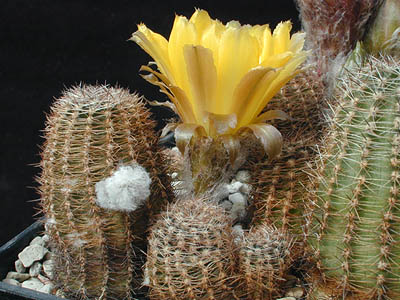
Indian Head Cactus, also referred to as Echinopsis, is celebrated for its notably unique, round shape. This succulent produces remarkable yellow flowers that bloom during the night, adding a touch of exotic beauty to any succulent collection. The large, vibrant blooms can span several inches, making them a favorite for enthusiasts.
This cactus prefers bright, indirect sunlight and well-draining soil. Watering should be minimal, particularly in winter, allowing the soil to dry out completely between intervals. The Indian Head Cactus not only beautifies your space with its striking appearance but also offers a fascinating floral display that brings curiosity to any collection.
Euphorbia Polychroma
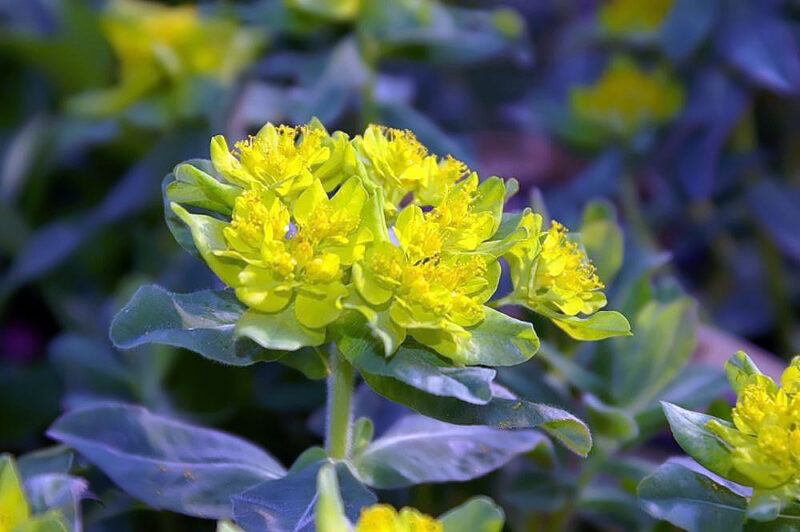
Euphorbia Polychroma, commonly called Cushion Spurge, is a unique succulent that boasts stunning yellow blooms atop its cushion-like clusters. In the spring, the vibrant yellow bracts appear, resembling flowers and offering a joyful display against the lush green foliage. This succulent is perfect for adding an unexpected twist to your collection.
Euphorbia Polychroma prefers bright light and well-drained potting mix. Once established, it requires minimal watering, which is a significant advantage for busy plant owners. While different from the classic succulent form, its distinctive look and cheerful blooms make it an exceptional choice for any garden enthusiast.
Yellow Ice Plant
Yellow Ice Plant, or Delosperma cooperi, is a vibrant ground cover succulent known for its stunning daisy-like yellow flowers that bloom profusely during the warmer months. When in full bloom, this succulent creates striking colorful carpets that catch the eye and draw in pollinators, making it a fantastic choice for gardens looking to enhance biodiversity.
This easy-to-care-for plant flourishes in full sun and enjoys well-draining soil. Once established, it requires minimal watering, exhibiting excellent drought tolerance. Yellow Ice Plant’s combination of stunning blooms and ease of care makes it a favorite among gardeners looking to bring a vibrant aesthetic to their outdoor spaces.
Star Cactus
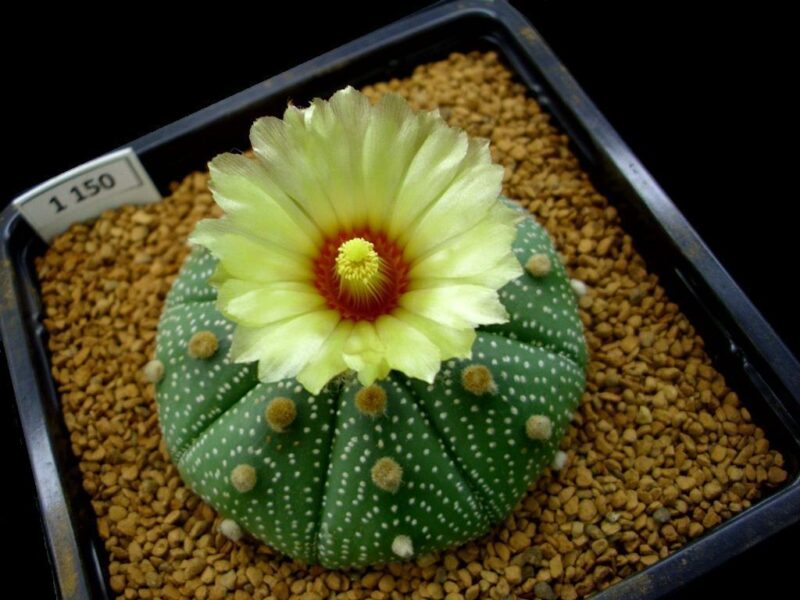
Star Cactus, or Astrophytum asterias, is a striking succulent that earns its name for its star-like shape. During the blooming season, this cactus showcases beautiful yellow flowers that rise from its center, adding charm and allure. These flowers can be large and captivating, enhancing the overall appeal of this unique plant.
Star Cactus thrives in bright, indirect light and prefers well-drained soil. Water sparingly, particularly during the winter months when the cactus enters dormancy. The distinctive appearance of the Star Cactus coupled with its stunning blooms makes it a fascinating addition to any succulent collection, sure to spark conversation.
Conophytum Bilobum
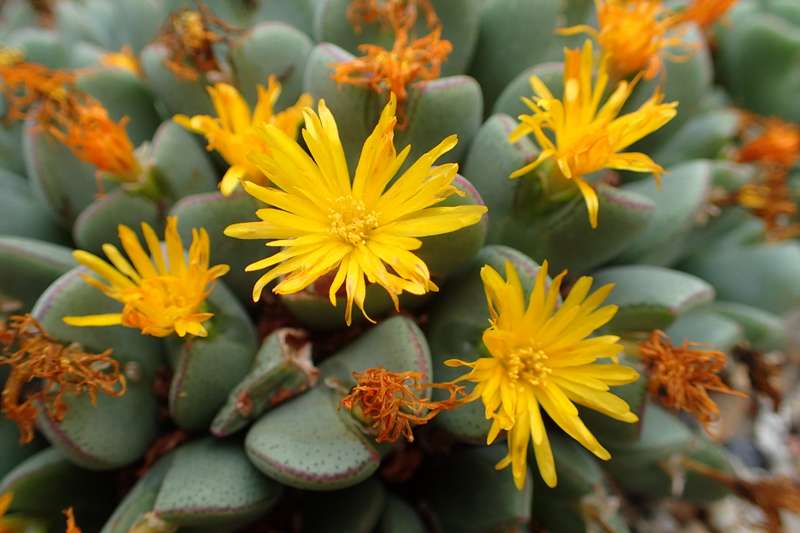
Conophytum Bilobum is a fascinating succulent belonging to the Aizoaceae family. Its unique dual-lobed leaves often resemble stones or pebbles, making this succulent an excellent choice for rock gardens. In the autumn months, Conophytum Bilobum surprises enthusiasts with vibrant yellow, daisy-like flowers that add a delightful touch to spacious arrangements.
This plant thrives in well-draining soil and prefers bright light, although it can tolerate moderate sun exposure. Watering should be kept minimal, as these plants are adapted to arid environments; they flourish with little moisture. The quirky form and delightful blooms of Conophytum make it an engaging and visually appealing plant to care for.
Sedum Acre
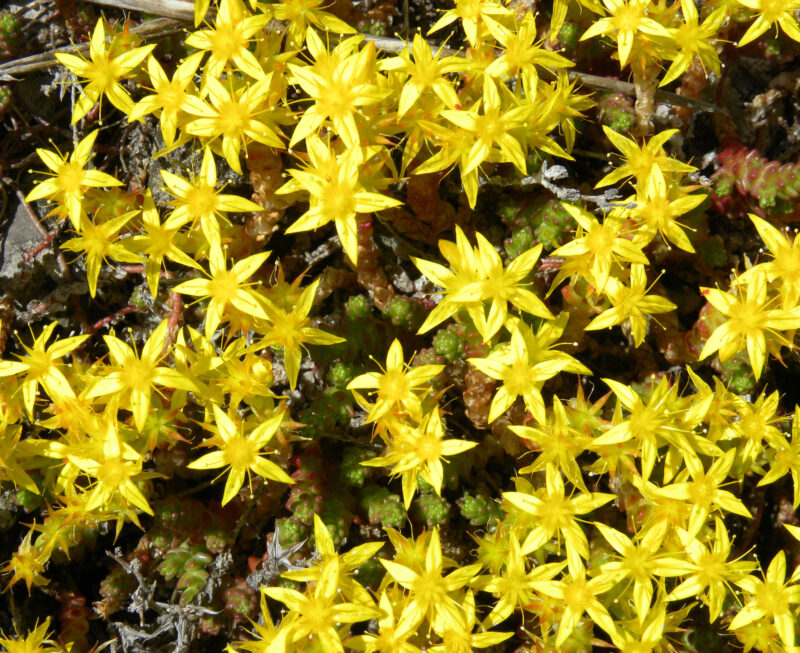
Sedum Acre, commonly known as Goldmoss Stonecrop, is a resilient and vibrant ground cover succulent that produces tiny yellow flowers during the spring months. This hardy plant creates a lush, colorful carpet of greenery accented by cheerful blooms, making it an excellent asset for rock gardens or other landscaping designs.
Sedum Acre loves full sun and is highly drought-resistant, which makes it perfect for gardeners who prefer low-maintenance plants. Well-drained soil is essential for maintaining its health, as they thrive when the underground environment is dry. Its ability to establish ground coverage while showcasing stunning yellow flowers makes Sedum Acre a must-have for any succulent lover.


